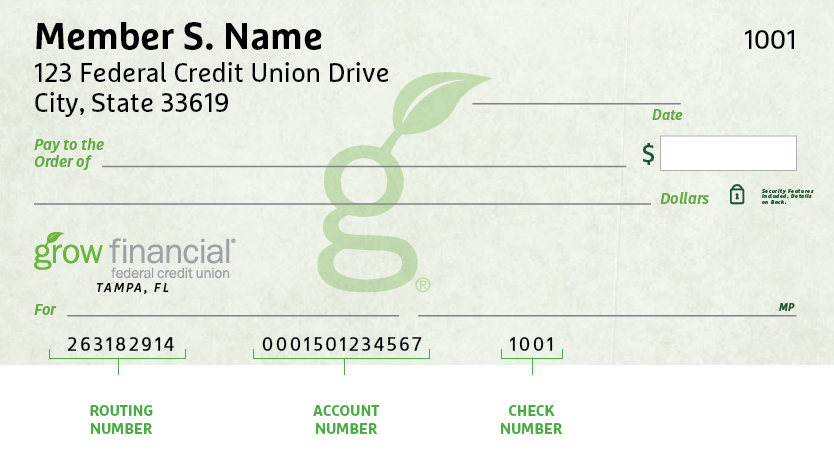- Personal
- Membership
- Membership
- Rates & Fees
- Checking
- Checking
- Personal Loans
- Personal Loans
- Wealth Management
- Investment Services
- Financial Advisors
- Resource Center
- Business

January 13, 2022
Six Tips for Traveling on a Budget
A new year sparks new dreams, and for many of us, that means travel plans. Nearly 80% of Americans plan to take a wish list trip in the coming months, according to a new survey from Hilton, and a whopping 59% of respondents plan to take a bucket list vacation that they wouldn’t have considered before the pandemic. Before you go, whether you’re planning a dream vacation or a quick weekend getaway, take some time to consider these six tips for traveling on a budget.
Choose your vacation priorities.
Dream vacation means different things to different people, so it’s important to ask yourself what your vacation priorities are. Is there a city or country you’ve always wanted to visit? Are you interested in any specific sites, like national parks or museums? Do you want to immerse yourself in a new cultural experience? Or, is a hearty amount of rest and relaxation your end game? Laying out a clear list of what you want out of your vacation will help narrow down your travel plans.
Make a vacation budget plan and start saving.
Traveling without a set budget can lead to overspending. Before the fun part of your vacation can begin, it’s important to map out what your trip will cost and what you can afford to spend. Even if a detailed travel itinerary is not for you, try to give yourself a blueprint for how much you’re prepared to spend in major categories. Remember to consider costs for transportation, hotels, dining, entertainment and any specific activities that are on your must-do list.
The bigger your trip, the more time you’ll need to save up. Working on your vacation fund? Use the Savings Goals tool in online and mobile banking to create and track multiple savings goals.1 Prefer a specific account to keep your vacation fund separate? Club Accounts are a great option.2
Travel in the off-season.
If you’re aiming to save money on your vacation and can be flexible about dates, this might be the best budget travel tip. Think about going to popular destinations during less popular times, also known as the off-season. For example, you may opt for a beach vacation in October through February, when fewer tourists are flocking to the area. When hotels are desperate to fill rooms, they tend to cut their rates, which can mean big savings for you. Car rentals, flights and more are often cheaper in the off-season, so bargain-hunters, consider being flexible with your travel dates.
Book flights at the right time.
No one has a fool-proof solution for getting the absolute rock bottom rate on flights, since rates can fluctuate day to day, hour by hour. But there are some best practices for finding the most reasonable rates you can. According to CheapAir’s Annual Study on Domestic Flights, you should get your ticket an average of 64 days before your trip when flying domestically to be within 5% of the lowest price point. The study also showed that seasonality is a factor, with the cheapest flights found 84 days prior to a spring trip, 67 days for summer, 89 days for fall and 94 days for winter. That means don’t wait until the last minute before your trip, but don’t plan more than four months ahead, either. For travel outside the U.S., CheapAir’s Annual Study on International Flights shows that the perfect time to book depends mostly on the destination country, with recommendations fluctuating widely between 1.5 months to nearly a year ahead. Researching flights for your specific destination is particularly important for international travel.
Shop around.
Much like with any purchase, comparison shopping can lead to big savings. Shop around online using travel comparison tools, such as Expedia, Kayak or many others to find the best rates for your trip.3 Make sure to keep in mind any fees these services may charge, so look at the bottom line price to get a real comparison. Some hotels actually offer best price guarantees when you book with them directly, so keep this in mind as you research prices to decide what works best for your trip.
Consider all-inclusive vacations.
All-inclusive vacation packages are available for many popular destinations and vacation types, including cruises. They aren’t going to be the absolute cheapest option every time, but going the all-inclusive route can be a great way to lock in your spending total ahead of time. You’ll know exactly what you need to have saved up, which can keep you from busting your budget. Be aware of the potential for costly add-ons that might not be in the budget (like day trips or additional excursions) and make sure you understand what is and isn’t included, so you can plan accordingly for all expenses. If you do find an all-inclusive deal but aren’t sure if it’s worth it, do a side-by-side comparison of what you’d spend on each element individually, like hotel, dining and transportation. That will help you decide if the all-inclusive option works for you.
You might think traveling on a budget isn’t possible, but with the right amount of research, planning and saving, you can still make a great vacation a reality. We hope you can put these budget travel tips to good use in 2022 and finally take the dream vacation you’ve had in mind.
1Additional data charges may apply. Please see your wireless carrier for more information.
2Grow Savings Accounts are subject to ChexSystems® approval.
3Grow is not affiliated with Expedia or Kayak.
Posted In:
How to Find Your Routing & Account Numbers
When you make a payment online, by phone or on a mobile device, you may be asked for our routing number and your checking account number. Credit unions and banks use these numbers to identify accounts and make sure money gets where it’s supposed to be. You’ll also need to provide your routing and checking account numbers for:
- Direct deposits
- Electronic checks
- Military allotments
- Wire transfers
Where to Find Your Routing & Checking Account Numbers
Your personal checks include both our routing number and your account number, as shown on the Grow check example below.

Don’t have a Grow check? No worries.
Visit any Grow store and ask for a Direct Deposit Form. It lists both your routing number and checking account number.
Making a Loan Payment
Incorrect Phone Number Alert
We’ve identified an incorrect phone number listed in a letter sent to a select group of new members with auto loans. The incorrect number is NOT affiliated with Grow. Please be sure to use our official phone number, 800.839.6328, which you can verify on our Contact Information page. For your security, keep your personal information safe and avoid sharing it over the phone, email or text message. We will never ask you for your credit or debit card security code, expiration date or PIN, login security codes, or your online banking password.
When it comes to making payments, we try to make it as painless as possible to pay your loan every month. We have several different ways to pay, including convenient online options.
Pay Online
You have two ways to pay online by transferring funds from another bank or credit union.
- Grow Online Banking (Preferred payment method for any loan)
This is the simplest way to pay your loan. You can make one-time payments or set up automatic recurring payments in Grow Online Banking. Once you log in, select “Transfer/Payments” from the menu. If you’re not enrolled in Grow Online Banking yet, you can set up your account in just a few minutes.
Log In
- Debit Card or ACH (Available for auto, personal loans and HELOCs)
Note: ACH and debit card payments are not available for credit cards or most mortgages, except HELOCs.
We accept ACH payments with no additional fees, consumer Mastercard® and Visa® debit cards with a convenience fee of $4.95, or commercial Mastercard® and Visa® debit cards with a convenience fee of 2.95% of the payment amount. To get started with an online ACH or debit card payment, select Pay Now below.
Pay Now
Pay by Mail
You can also pay any Grow loan by check through the mail. Please remember to include your account number and Grow loan number on the check. (For credit card payments, please do not write your 16-digit credit card number on the check, which can cause a delay in processing the payment.)
Address for auto, credit card, personal loan and HELOC payments:
Grow Financial Federal Credit Union
P.O. Box 75466
Chicago, IL 60675-5466Address for personal first or second mortgages and home equity payments:
Grow Financial Federal Credit Union
P.O. Box 11733
Newark, NJ 07101-4733You Are About To Leave GrowFinancial.org
At certain places on this site, there are links to other websites. Grow Financial Federal Credit Union does not endorse, approve, represent, certify or control those external sites. The credit union does not guarantee the accuracy, completeness, efficacy, timeliness or accurate sequencing of the information contained on them. You will not be represented by Grow Financial Federal Credit Union if you enter into a transaction. Privacy and security policies may differ from those practiced by the credit union. Click CONTINUE if you wish to proceed.
